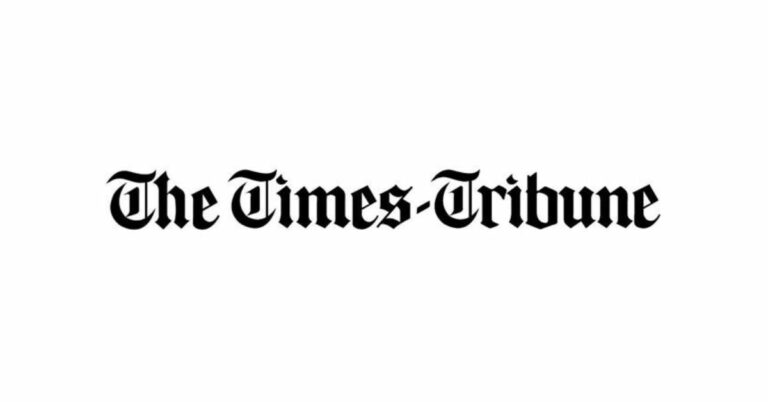Some area residents spend nearly half their income on household bills

Original Source: The Times-Tribune
By Denise Allabaugh Staff Writer
As the cost of living has become more expensive, some area residents spend nearly half their income on household bills.
A recent study by doxoINSIGHTS showed bills account for 49% of the average annual household income of $54,944 in Hazleton, while Scranton households spend 47% of their average income of $55,137 on bills and Wilkes-Barre households spend 37% of their average income of $54,944 on bills.
Mortgage and rent are the highest expenses of the bills Hazleton, Scranton and Wilkes-Barre residents pay, but overall household expenses in Northeast Pennsylvania are less than the U.S. average.
According to the study, the average household in Scranton pays $1,779 per month, or $21,351 per year, on bills. Scranton is ranked the 144th most expensive city in Pennsylvania for household expenses, which are 13.1% less than the U.S. average.
The average household in Hazleton pays $1,664 per month, or $19,973 per year, on bills. Hazleton is ranked the 170th most expensive city in Pennsylvania for household expenses, which are 18.7% less than the U.S. average.
The average household in Wilkes-Barre pays $1,491 per month, or $17,889 per year, on bills. Wilkes-Barre is ranked the 200th most expensive city in Pennsylvania for household expenses, which are 27.2% less than the U.S. average.
Households in Scranton pay monthly an average mortgage bill of $1,033, an average rent bill of $838, an average auto loan bill of $495, an average utility bill of $275, an average health insurance bill of $191 and an average auto insurance bill of $156.
In Hazleton, the average monthly mortgage bill is $924, the average rent bill is $874, the average utility bill is $391, the average auto loan bill is $385, the average auto insurance bill is $233 and the average health insurance bill is $131.
In Wilkes-Barre, the average monthly mortgage bill is $941, the average rent bill is $818, the average auto loan bill is $350, the average utility bill is $254, the average auto insurance bill is $223 and the average health insurance bill is $131.
Trending Stories
- Giant culm bank in middle of Dickson City to be removed
- Gov. Shapiro describes visit with wounded Scranton police detective
- Judge orders Scranton homeowner to remove backyard structure
- Former Susquehanna County pastor’s son a hostage in Afghanistan
- State police investigate interstate Bobcat loader thefts
Teri Ooms, executive director of The Institute of Public Policy and Economic Development, said the study and additional Institute data show Northeast Pennsylvania is more affordable than many places in Pennsylvania and the nation.
Yet Ooms pointed out that the cost of housing, even without the current high interest rates, is very high and area residents continue to grapple with inflation. The problem was exacerbated by COVID but was manifesting itself before, she said.
“The bottom line is that just like everything else, housing is a supply and demand issue and we have had a supply problem that is getting worse,” Ooms said. “New construction on single- and multi-family homes has been very limited over the past two decades. So hence the issue.”
Looking at the region’s data by income, Ooms said lower-income people are being challenged with housing and the inflationary costs of most necessities.
“Thus the area will not seem affordable to that group of individuals. Frankly, that is the case nationwide,” she said. “High housing costs are more common than not now. Hopefully inflation will continue to decrease, improving our affordability numbers and hopefully there will be more single- and multi-family achievable housing. I am not saying subsidized, but achievable because not only are seniors, recent grads and the impoverished challenged with housing costs, so are many middle-class families.”
As for utility bills, the Pennsylvania Public Utility Commission urges consumers to begin shopping now for their natural gas supply, which could result in savings on the energy portion of their monthly natural gas bills.
As the heating season nears, PUC officials recommend consumers review past bills and supplier contracts, and compare natural gas prices to identify potential savings. Because energy costs typically make up more than half of a utility bill, they said lower energy prices can have a noticeable impact on the size of monthly bills.
According to the PUC, warmer weather in late summer and early fall typically means less demand for natural gas, especially for residential gas customers, and that can translate into lower energy prices. Locking in a lower energy price now can help insulate consumers against potential energy price spikes this winter when gas usage and energy prices traditionally go up.
The PUC’s natural gas shopping website, PAGasSwitch.com, reflects offers from competitive suppliers throughout Pennsylvania.
